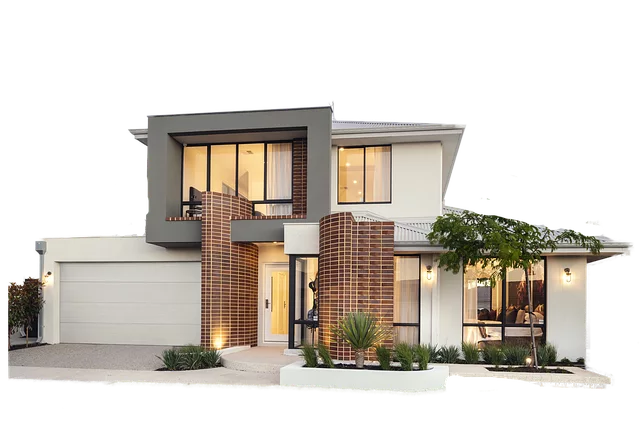Residential foundation repair is crucial for maintaining home stability and integrity. Common issues include differential settling, heave, and structural damage caused by environmental factors, poor construction, or aging. Early detection through regular inspections prevents severe problems like concrete cracks, bowed walls, uneven floors, settlement gaps, and water intrusion. Non-invasive techniques like GPR and moisture meters aid in targeted, cost-efficient repairs. Traditional methods such as steel bar reinforcement and piering systems remain reliable, while modern innovations offer advanced inspection tools and durable materials for enhanced performance. Cost considerations depend on damage extent and repair complexity, emphasizing the importance of tailored solutions and regular maintenance to ensure your home's foundation remains stable and well-cared for.
Residential foundation repair is a critical aspect of home maintenance, ensuring structural integrity and safety. This comprehensive guide delves into the essentials of understanding and addressing residential foundation issues. We explore the importance of regular structural foundation inspections, highlighting common problems like cracks, settlement, and water damage. Learn to identify subtle signs of foundation distress and discover various inspection methods, from non-invasive techniques to traditional repair solutions and modern innovations. Understanding these aspects empowers homeowners to take proactive steps for long-lasting foundation health.
Understanding Residential Foundation Repair: The Basics

Residential foundation repair is a crucial aspect of maintaining a safe and stable home. The foundation serves as the structural backbone, supporting the entire structure. Over time, various factors like settling soil, faulty construction, or natural disasters can lead to cracks, shifts, or damage in the foundation. These issues might seem minor at first, but they can compromise the integrity of the building if left unaddressed.
When it comes to residential foundation repair, understanding the basics is essential. This involves identifying common problems like differential settling (where different parts of the foundation settle at varying rates), heave (when soil expands and contracts due to moisture changes), or structural failures caused by poor initial construction. Homeowners should be vigilant about regular inspections and addressing any signs of distress early on. Basic repairs often involve re-leveling, reinforcing with steel beams, or replacing damaged sections of the foundation to ensure stability and longevity.
Importance of Regular Structural Foundation Inspection

Regular structural foundation inspections are a crucial aspect of home maintenance, often overlooked but of utmost importance for any property owner. These inspections play a pivotal role in identifying potential issues and preventing more severe problems that could lead to costly residential foundation repair. By conducting thorough checks at regular intervals, homeowners can ensure the stability and integrity of their properties’ foundations.
Such inspections allow for early detection of cracks, shifts, or signs of damage, which may indicate foundational problems like settlement, heave, or even water intrusion. Addressing these issues promptly is essential to avoid further deterioration and costly renovations. Regular maintenance not only extends the lifespan of a home’s foundation but also provides peace of mind for owners, knowing their investment is well-cared for.
Common Issues in Home Foundations

Home foundations, while essential for structural integrity, can develop various issues over time due to environmental factors, poor initial construction, or aging. Some common problems include cracks in concrete or masonry, bowing walls, uneven floors, and settlement gaps. These issues may result from improper soil compaction, expansive clay soils, excessive moisture, or weak foundation designs.
Residential foundation repair is often necessary to address these problems. Crack repairs involve sealing and strengthening the foundation using advanced epoxy injections or hydraulic cement. Bowing walls can be stabilized by installing steel braces or push piers, which redistribute the load and prevent further damage. Uneven floors may require jacking and leveling techniques to realign the foundation and restore levelness. Early detection and professional intervention are key to mitigating these issues, ensuring the longevity of the structure, and preventing more costly repairs in the future.
Identifying Signs of Foundation Damage

Identifying signs of foundation damage is crucial for maintaining a solid and safe residential structure. One of the most obvious indicators is visible cracks on the walls or floors, which can be caused by shifting soil, inadequate footing, or structural instability. These cracks may appear as hairline fractures or wider gaps, and they can develop over time, especially in regions prone to settlement or expansive clay soils.
Other telltale signs include uneven doors and windows that stick or do not align properly with the frame, sloping floors, and bulging or tilted walls. Moisture intrusion is another red flag; water stains, peeling paint, or musty odors near foundations suggest potential problems. Regularly inspecting your home for these signs is essential in catching foundation damage early, preventing further complications, and averting costly residential foundation repair bills.
Non-InvasiveInspection Methods

Non-invasive inspection methods play a crucial role in the realm of residential foundation repair, offering a plethora of benefits. Techniques such as ground-penetrating radar (GPR) and moisture meters are game changers when it comes to assessing structural integrity without causing any damage. GPR, for instance, uses radio waves to create an image of what lies beneath the surface, revealing potential cracks or voids in the foundation. This technology is especially useful for examining concrete structures, providing a detailed look without the need for excavation.
Moisture meters, on the other hand, are instrumental in identifying water intrusion, a common issue that can lead to serious foundation problems. By measuring moisture levels, professionals can pinpoint areas of concern and take appropriate measures for repair. These non-invasive methods not only help in early detection but also ensure that any repairs are targeted and cost-effective, ultimately saving time and money for homeowners.
Traditional Foundation Repair Techniques

In the realm of residential foundation repair, traditional techniques have long been the cornerstone of ensuring structural integrity. One common approach involves the use of concrete, which is reinforced with steel bars to create a robust base for buildings. This method, often employed in slab-on-grade foundations, provides excellent stability and resistance against environmental factors like settlement and shifting soil conditions.
Another conventional strategy focuses on piering systems, where vertical supports are installed beneath the structure to redistribute the load. Foundation repair experts may use push or lift piers, which are adjustable and effective in stabilizing homes with settling issues. These techniques have been trusted for decades and remain integral to the field of residential foundation repair, offering both cost-effectiveness and reliability.
Modern Innovations in Foundation Restoration

Modern innovations in foundation restoration have brought about groundbreaking advancements in residential foundation repair. One notable development is the introduction of advanced non-invasive inspection techniques, such as ground-penetrating radar (GPR) and thermal imaging, which allow for precise evaluation of a structure’s subgrade without causing any damage or disruption. These technologies enable professionals to identify potential issues like cracks, voids, or settlement, facilitating early intervention and targeted repairs.
Additionally, modern foundation restoration techniques leverage advanced materials and methods, such as urethane injections for sealing cracks and structural reinforcement with carbon fiber wraps. These innovative solutions offer enhanced durability, increased load-bearing capacity, and improved long-term performance compared to traditional repair methods. By combining cutting-edge technology with state-of-the-art materials, residential foundation repair has evolved into a more precise, efficient, and effective process, ensuring the structural integrity and longevity of homes.
Cost Considerations for Foundation Repairs

When it comes to structural foundation inspection and subsequent repairs, cost considerations are a significant aspect for homeowners. The expense associated with residential foundation repair can vary greatly depending on several factors. One of the primary influences is the extent of damage; minor cracks or settlement may require less intensive and costly solutions compared to more severe issues like heave or shift. Additionally, the size and type of structure also play a role; larger homes often necessitate more extensive repairs, impacting the overall cost.
Materials used in the repair process contribute another layer of financial consideration. Some methods may involve replacing entire sections of foundation, which can be pricier than filling smaller cracks. Moreover, labor costs vary depending on local market rates and the complexity of the work. Homeowners should also factor in potential temporary structural support measures, especially if repairs cannot be completed immediately, adding to the overall expense.
Preventative Measures for Long-Lasting Foundation Health

Regular maintenance and preventative measures are key to ensuring the longevity and stability of your home’s foundation, thereby avoiding costly residential foundation repair down the line. One effective strategy is to implement a consistent inspection routine, ideally annual or bi-annual, to identify any potential issues early on. During these inspections, professionals can assess cracks, unevenness, water damage, or signs of insect infestation, addressing them promptly before they escalate.
Additionally, proper drainage around the property plays a crucial role in foundation health. Ensuring that rainwater and surface runoff are directed away from the foundation through adequate grading, downspout extensions, and well-maintained drainage systems helps prevent hydrostatic pressure from building up against the walls, which can lead to structural damage over time.
